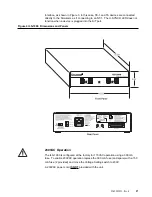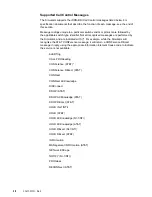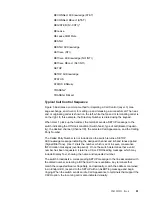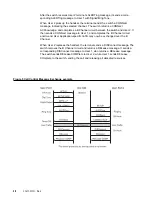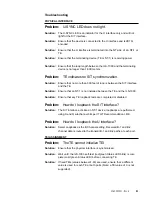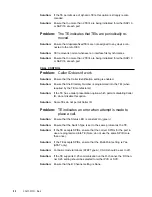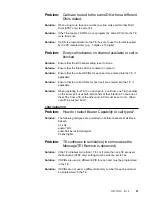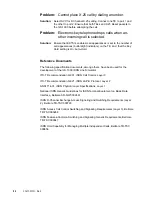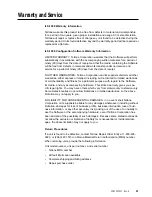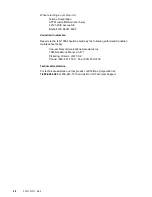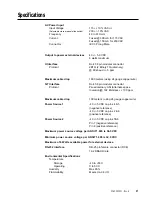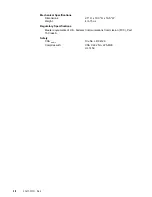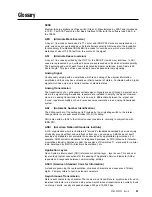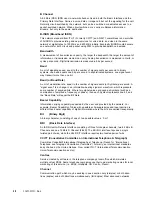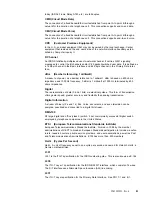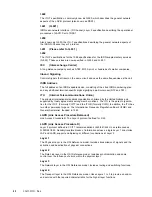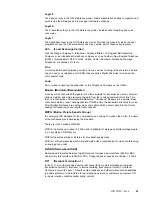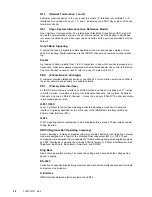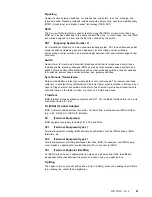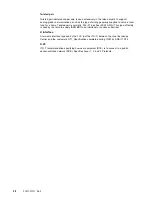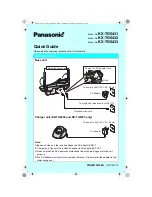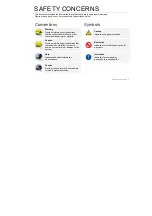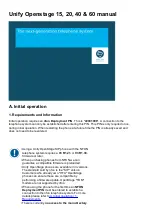
40-400-00001, Rev. A
41
today (ISDN< Frame Relay, ATM, etc.) are full duplex.
CMD (Circuit Mode Data)
The connection of a fixed bandwidth circuit established from point A to point B through a
network for the duration of a telephone call. This connection supports end-to-end data.
CMV (Circuit Mode Voice)
The connection of a fixed bandwidth circuit established from point A to point B through a
network for the duration of a telephone call. This connection supports end-to-end voice.
CPE
(Customer Premises Equipment)
In the U.S., end-user equipment that may not be owned by the local exchange; Carrier
equipment that resides on the end user’s side of the network interface boundary estab-
lished by Computer Inquiry II.
D Channel
An ISDN Statistically-multiplexed user-to-network channel. It carries Q.931 signaling
messages to control the B channels and/or X.25 packet-switched user data. It is defined as
a 16 Kbp/ channel in the Basic Interface and 64 Kbp/s channel in the Primary Rate Inter-
face.
dBm
(Decibel referencing 1 milliwatt)
A measure of power, as a decibel reference to 1 milliwatt. dBm is based on 600 ohms
impedance and 1000 Hz frequency. 0 dBm is 1 milliwatt at 1000 Hz terminated by 600
ohms impedance.
Digital
The representation of data (0 and 1 bits) via electrical pulses. This form of transmission
offers gaster speed, greater accuracy and flexibility than analog transmission.
Digital Information
A stream of binary (0’s and 1’s) bits. Voice, documents, and even television can be
samples, quantized and converted to a digital bit stream.
DMS-100
NT large digital end office (class 5) switch. First commercially successful digital switch
employed by telephone companies in the United States.
ETSI
(European Telecommunications Standards Institute)
European Telecommunications Standards Institute. Formed in 1988 by the member
administrations of CEPT to broaden European Standards participation to include manufac-
turers, research centers, private service providers, and user associations, as well as Post
and Telecommunications Administrations. ETSI has more than 250 members.
Hertz
(Cycles Per Second)
Hertz. A unit of frequency equal to one cycle per second and named for Heinrich Hertz, a
German mathematician.
I.331
I.331 is the ITU-T specification for the ISDN numbering plan. This is also known as E.164.
I.430
The ITU-T Layer 1 specification for the ISDN BRI S/T interface, which consists of 4 wires.
The S/T interface uses Alternate Space Inversion (ASI) line coding.
I.431
The ITU-T Layer specification for the Primary Rate Interface. See PRI, T-1 and E-1.

